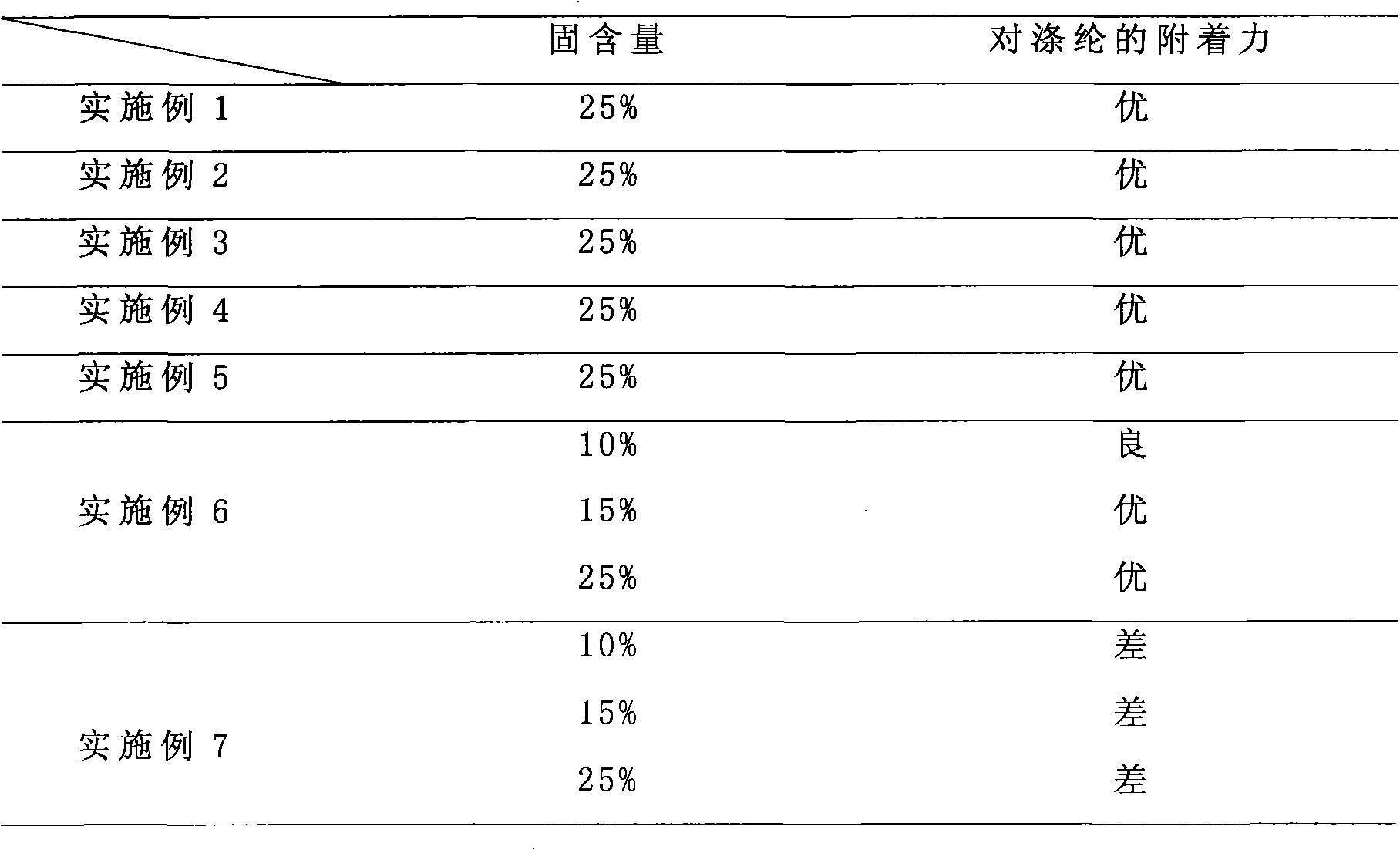Water-soluble copolyester and preparation method thereof
A copolyester, water-soluble technology, used in textiles, papermaking, fiber processing, etc., can solve the problems of affecting production efficiency, fabric quality, poor hairiness attached to the slurry, and increased yarn breakage. Good adhesion to hairiness, reducing the effect of broken ends
- Summary
- Abstract
- Description
- Claims
- Application Information
AI Technical Summary
Problems solved by technology
Method used
Image
Examples
Embodiment 1
[0030] Put 14.6kg of terephthalic acid, 6.6kg of isophthalic acid, 9.5kg of dimethyl isophthalate-5-sodium sulfonate, 15.8kg of ethylene glycol and 2.5kg of caprolactone into a 100L stainless steel reaction kettle, Add 28g of zinc acetate and 28g of trifluoromethanesulfonic acid, stir at a speed of 55-80rpm under a nitrogen system, rapidly raise the temperature to 60-100°C and react for 0.3 hours, then gradually raise the temperature to 220°C and keep it warm for 1 hour, then Raise the temperature to 230-270°C to react for about 2.2 hours, and stop the reaction when the amount of by-products produced reaches 6.3kg. Cool down to about 190°C, add 24g of antimony acetate and 15g of triphenyl phosphate, continue to heat up and decompress slowly, adjust the speed to 30-50rpm, control the temperature to 255-285°C, and gradually reduce the pressure to below 100Pa polycondensation reaction. Sampling analysis, when the viscosity of the polymer reaches the expected value, the stirring ...
Embodiment 2
[0033]Put 19.9kg of terephthalic acid, 2.6kg of isophthalic acid, 7.1kg of dimethyl isophthalate-5-sodium sulfonate, 15.3kg of ethylene glycol and 4.4kg of caprolactone into a 100L stainless steel reaction kettle, And add 32g of manganese acetate and 35g of trifluoromethanesulfonic acid, stir at 55-80rpm under the nitrogen system, rapidly raise the temperature to 70-110°C for 0.4 hours, then gradually raise the temperature to 230°C and keep it warm for 0.8 hours, then Raise the temperature to 245-275°C to react for about 1.5 hours, and stop the reaction when the amount of by-products reaches 6.1kg. Cool down to about 190°C, add 25g of antimony acetate and 15g of triphenyl phosphate, continue to heat up and decompress slowly, adjust the speed to 35-45rpm, control the temperature to 275-295°C, and gradually reduce the pressure to below 100Pa polycondensation reaction. Sampling analysis, when the viscosity of the polymer reaches the expected value, the stirring is stopped, the v...
Embodiment 3
[0036] Put 15.9kg of terephthalic acid, 7.9kg of isophthalic acid, 4.7kg of dimethyl isophthalate-5-sodium sulfonate, 16kg of ethylene glycol and 7.1kg of caprolactone into a 100L stainless steel reaction kettle, and Add 23g of manganese acetate and 45g of methanesulfonic acid, stir at 60-70rpm under nitrogen system, rapidly raise the temperature to 65-120°C and react for 0.45 hours, then gradually raise the temperature to 225°C and keep it warm for 1 hour, then raise the temperature to 240°C The reaction was carried out at ~270°C for about 1.8 hours, and the reaction was terminated when the amount of by-products produced reached 6.0 kg. Cool down to about 190°C, add 24g of germanium dioxide and 15g of triphenyl phosphate, continue to heat up and decompress slowly, adjust the speed to 40-50rpm, control the temperature to 260-285°C, and gradually reduce the pressure to below 100Pa polycondensation reaction. Sampling analysis, when the viscosity of the polymer reaches the expec...
PUM
| Property | Measurement | Unit |
|---|---|---|
| Glass transition temperature | aaaaa | aaaaa |
| Intrinsic viscosity | aaaaa | aaaaa |
| Glass transition temperature | aaaaa | aaaaa |
Abstract
Description
Claims
Application Information
 Login to View More
Login to View More - R&D
- Intellectual Property
- Life Sciences
- Materials
- Tech Scout
- Unparalleled Data Quality
- Higher Quality Content
- 60% Fewer Hallucinations
Browse by: Latest US Patents, China's latest patents, Technical Efficacy Thesaurus, Application Domain, Technology Topic, Popular Technical Reports.
© 2025 PatSnap. All rights reserved.Legal|Privacy policy|Modern Slavery Act Transparency Statement|Sitemap|About US| Contact US: help@patsnap.com

